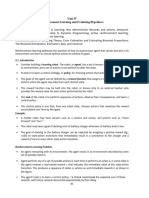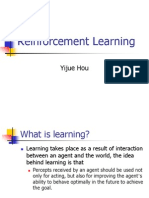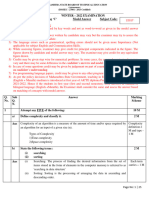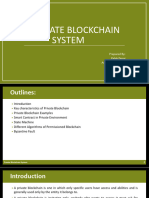0% found this document useful (0 votes)
20 views59 pages10 ReinforcementLearning
The document provides an overview of reinforcement learning, emphasizing the need for agents to explore different strategies to maximize rewards based on feedback from their environment. It discusses key concepts such as state, action, reward, policy, and the importance of Markov Decision Processes in decision-making. Additionally, it includes examples and methods for action selection and value function updates, particularly focusing on Q-learning.
Uploaded by
jiofijiofi0Copyright
© © All Rights Reserved
We take content rights seriously. If you suspect this is your content, claim it here.
Available Formats
Download as PDF, TXT or read online on Scribd
0% found this document useful (0 votes)
20 views59 pages10 ReinforcementLearning
The document provides an overview of reinforcement learning, emphasizing the need for agents to explore different strategies to maximize rewards based on feedback from their environment. It discusses key concepts such as state, action, reward, policy, and the importance of Markov Decision Processes in decision-making. Additionally, it includes examples and methods for action selection and value function updates, particularly focusing on Q-learning.
Uploaded by
jiofijiofi0Copyright
© © All Rights Reserved
We take content rights seriously. If you suspect this is your content, claim it here.
Available Formats
Download as PDF, TXT or read online on Scribd
/ 59




























































































